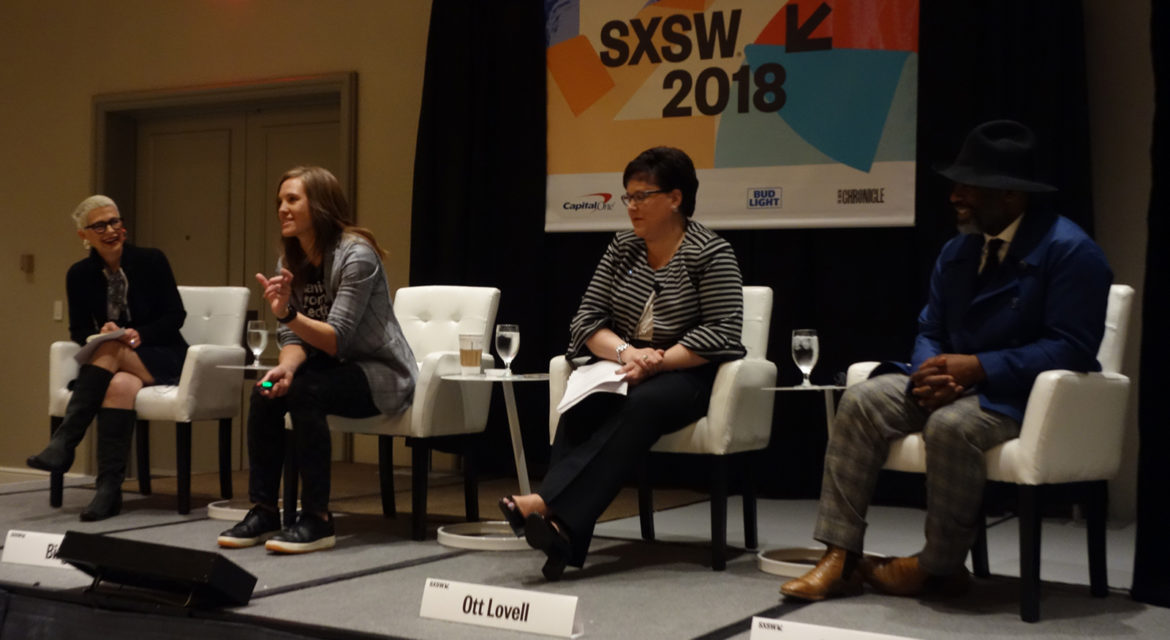Cities across the world are changing in literal and figurative ways. The roles and functions of libraries, parks, community centers, and schoolyards are changing in light of 21st century needs, but many of these spaces are also succumbing to challenges related to their age ability to serve the public. The first comprehensive demonstration of the power of these kinds of spaces was created to specifically address these issues and many more.
Reimagining the Civic Commons is a three-year, national initiative with projects in five U.S. cities that revitalize and connect civic assets. By revitalizing and connecting public places such as parks, plazas, trails and libraries, the public’s expectations of all these places are transforming. Exactly how this is being done is something that was addressed at the SXSW 2018 session, Reimagining the Civic Commons.
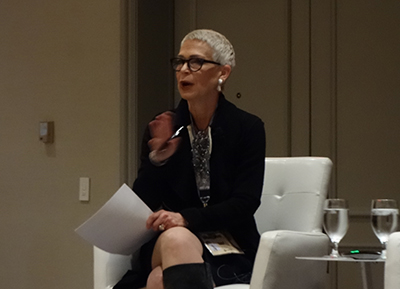
During the session, Carol Coletta from the The Kresge Foundation talked about what the Civic Commons project is designed to ultimately enable, and how the essential element of the project comes down to increasing socioeconomic mixing. As communities have changed over the past few decades, many have become more racially integrated, but are now more economically segregated. Communities don’t have as many bridging mechanisms as they used to, which makes it harder for people to empathize with each other. Being able to create these bridging mechanisms and measure the success of elements like socioeconomic mixing is one of the goals of the Civic Commons initiative
Gia Biagi from Studio Gang discussed how her team is attempting to rethink how to classify things like employment, fitness, faith-based education, health, civic arts and culture. Much of that comes down to being able to meet people where they are literally and figuratively, but it’s something that often needs to be done in incremental ways. There might be a grand vision or piece associated with the effort to transform a space, but that can’t always all be done at once. It means they can’t build the beautiful thing first, and instead need to work up to it.
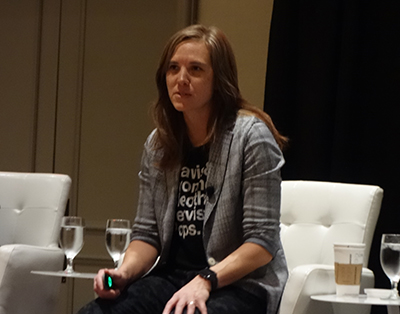
Biagi also talked through what it would mean to improve issues like violence, which ties into the concept of “push + pull” for public spaces like schools, libraries and police stations in terms pushing and pulling people to them to create engagement. Making connections to people and places is the priority, but those connections have to start somewhere, and it often comes from a place of trust.
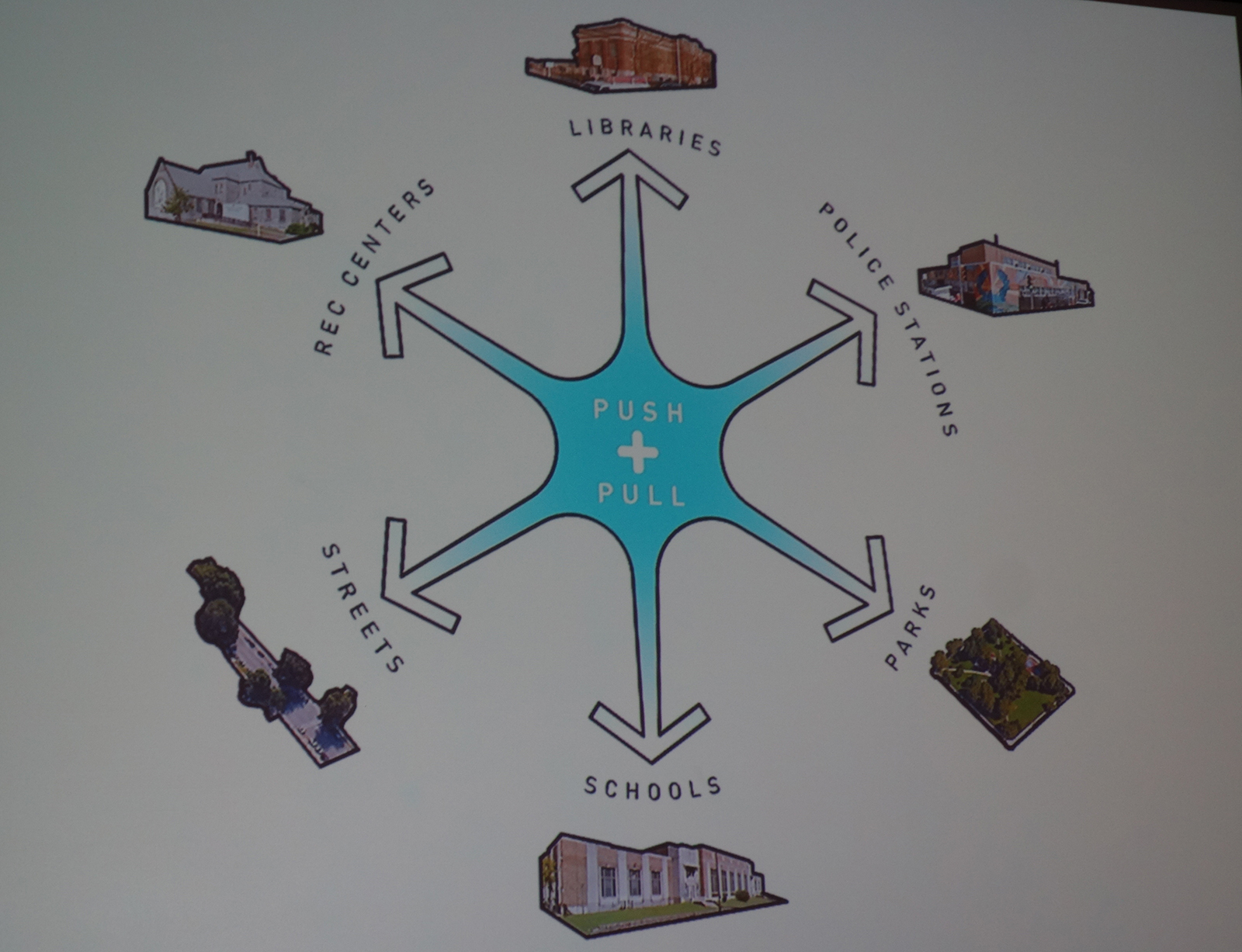
One of the most powerful concepts Biagi mentioned was that there are no best practices, just best principles. It’s something that she illustrated with her example of the basketball court that was installed at a particular police station. This installation has created incredible engagement for the police and this community, but Biagi isn’t about to say that doing this exact same thing can work for every department or every community. It’s the principle of creating this engagement that was essential, and it’s something that can and should be approached in different ways, in different places.

Theaster Gates is a Social Practice Installation Artist, and he talked through what it means to leverage the power and potential of communities, buildings, and objects that others have written off. Gates’s non-profit, Rebuild Foundation, is a platform for art, cultural development, and neighborhood transformation, and he showed a variety of examples of what that transformation can look like.
One of the concepts that Gates discussed is what can happen when communities have a need but don’t have a place or venue to see that need fulfilled. He talked about how kids in some neighborhoods can make a park in the absence of a park. It can mean doing something without waiting for people to do it and should empower stakeholders to take action when they recognize these kinds of needs.
Some of that ties into where and how redevelopment can be enabled. Some buildings and locations don’t make sense for developers, so what can they do with something when they can’t guarantee ROI? How can they redefine ROI? Doing so can be about focusing on building types that make adjacent development possible, and fulfilling a need. That can mean a new town can come together in a piecemeal manner, and neighbors can come along for this process. It can mean combining excess land or infrastructure with excess people to make something that is greater than the sum of its parts.
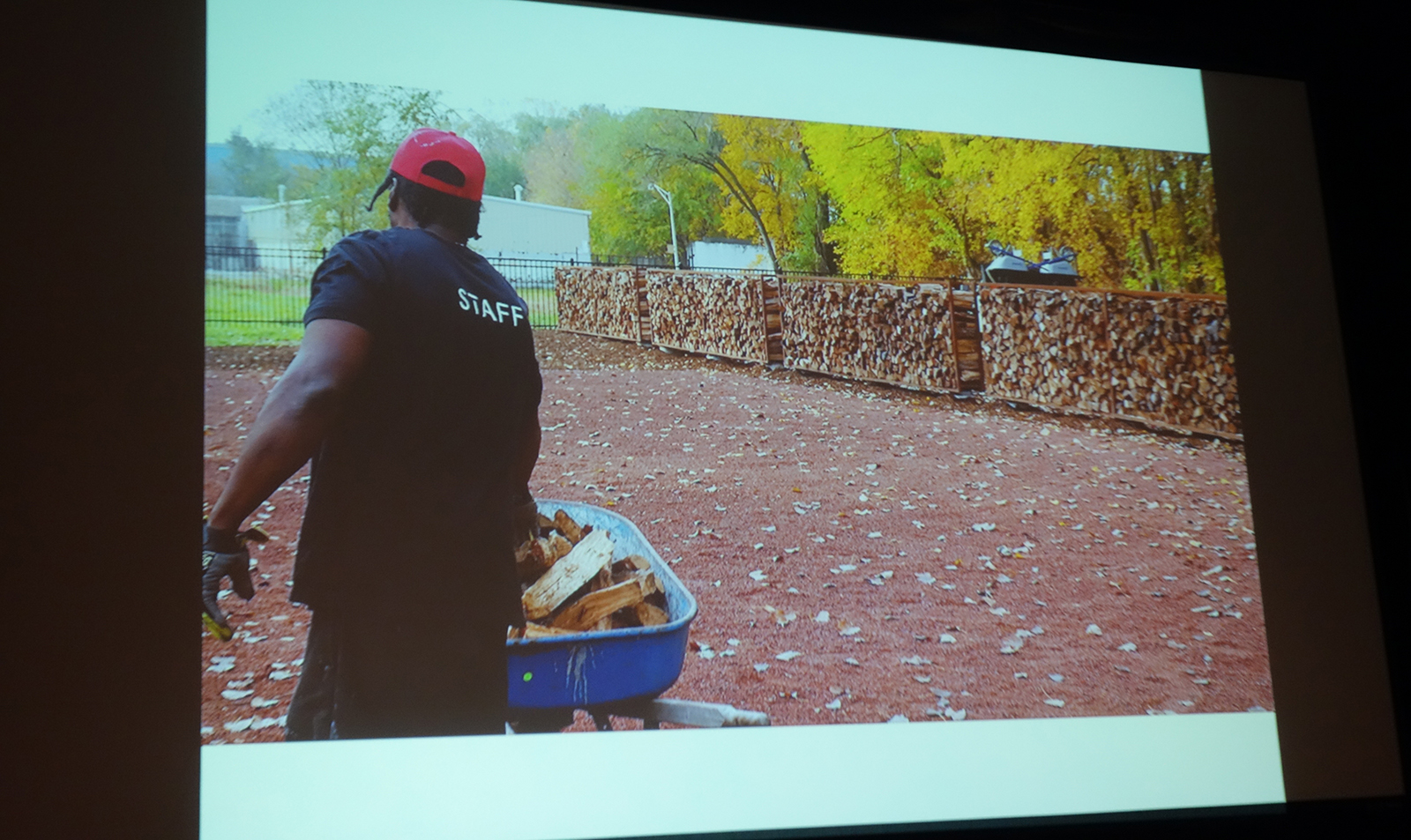
That effort in and of itself comes down to beauty being a collective achievement, to will something together. As Gates said, what it means to make that work in different areas and for different communities is the question of our time.
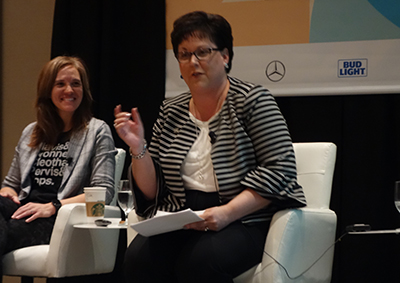
Kathryn Ott Lovell from the City of Philadelphia rounded out the panel, and as one of the five cities participating in the Reimagining the Civic Commons project, she was able to share some incredible detail around what the effort has meant to and for the city.
Philadelphia itself is at a crossroads, as the city is growing, but high poverty rates are persistent. That made the city ideal for the Civic Commons project, and the changes they’ve been able to enact have taken place at five specific places across the city. Lovell talked through the way in which the Lovett Library & Park, Discovery Center, The Viaduct Rail Park, Centennial Commons and Bartram’s Mile have all been reimagined and reinvigorated. These changes have been both literal and figurative, as they’ve been about doing everything from installing a riverfront bike and pedestrian trail, to making the experience at the library about more than books.
All of these efforts come back to four Civic Common Principles related to enabling civic engagement, socioeconomic mixing, environmental sustainability and value creation. In one way or another, you can see these values reflected in these five model projects in Philadelphia, just as you can see them in Chicago, Detroit, Memphis and Akron.
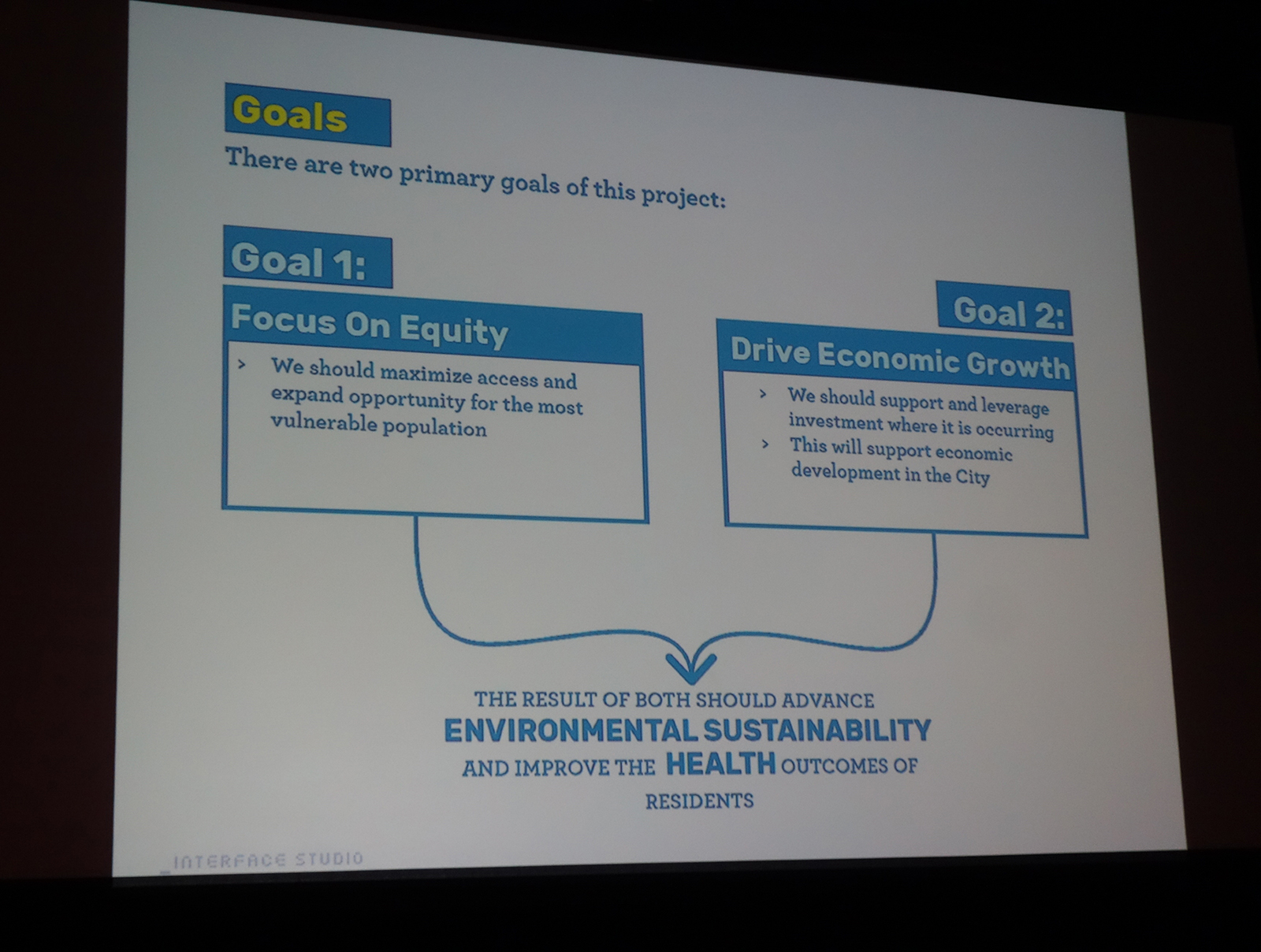
All of the presenters made it clear that what it means to transform a space or place is going to vary depending on the details. Being able to enact effective change is about focusing on equity and being able to drive economic growth and not being focused on a specific approach to enabling each. What it means to transform public spaces comes down to thoroughly considering the needs, wants and desires of a given area or community, and that’s something that can have economic and cultural ramifications.
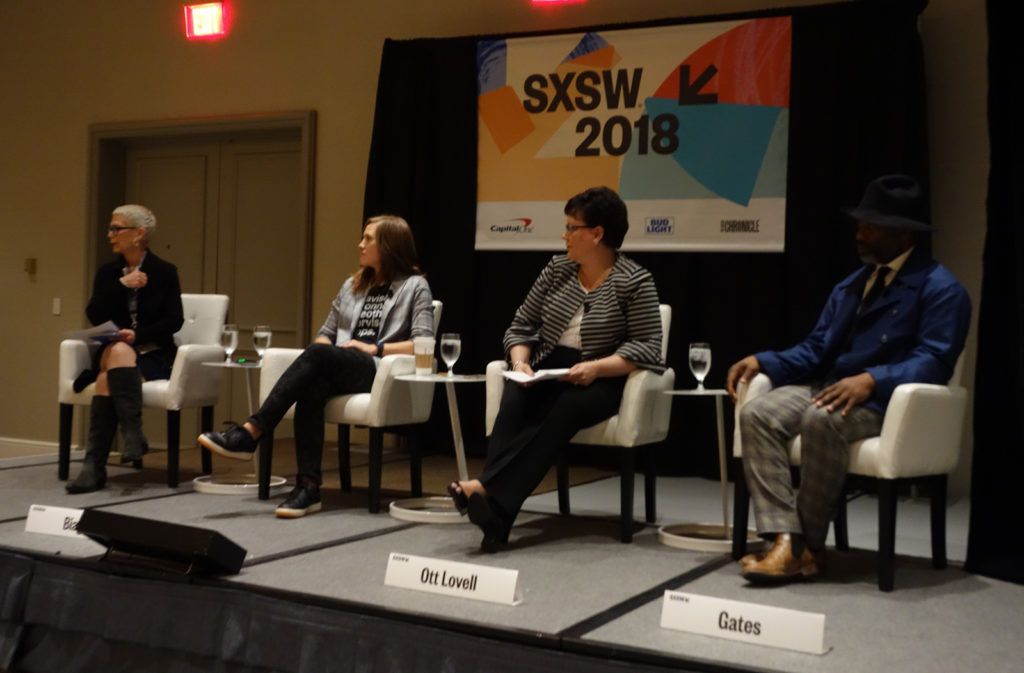 Once such details have been properly assessed, an effective plan around transforming the space can be enacted, and changes of all different sizes and scope can be enabled in powerful ways.
Once such details have been properly assessed, an effective plan around transforming the space can be enacted, and changes of all different sizes and scope can be enabled in powerful ways.
